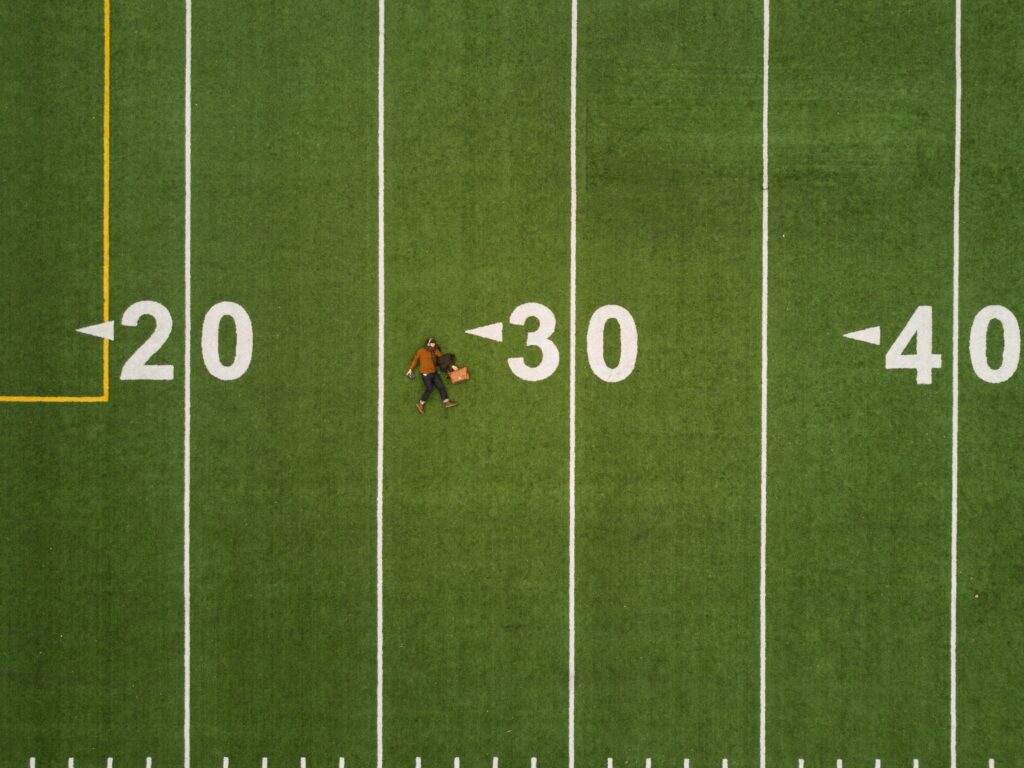
At what age do mental disorders typically begin? Knowing that can help us target prevention and early intervention efforts, thereby improving mental health outcomes and quality of life. Well-timed prevention efforts can alter the course of the disorder, sometimes preventing it altogether, with enormous societal and individual benefits.
Although the benefits from mental health promotion are largest when people are targeted close to the age of onset, there are conflicting findings and misconceptions about when that is, partly due to methodological limitations, including selection biases in recruitment for clinical studies. General population studies provide the most robust estimates of age of onset, but to date these have not been pooled in a comprehensive, epidemiologically sound meta-analysis that would allow for optimising the timing of intervention, prevention and promotion of good mental health.
In the study reported here, Marco Solmi and colleagues (2021) conducted a meta-analysis of 192 studies (n = 708,561) in order to estimate age ranges and peak ages of onset for a wide variety of mental disorders listed in the International Classification of Diseases and Diagnostic and the Statistical Manual of Mental Disorders.

Knowing when mental disorders typically begin can inform prevention and early intervention efforts, thereby dramatically improving quality and length of life, with benefits both for society and the individual.
Methods
Solmi et al. (2021) performed a systematic review, following PRISMA recommendations and MOOSE guidelines. They conducted 2 independent searches of PubMed and Web of Science using these terms: “age at onset”, “birth cohort,” “mental disorder,” and “incidence,” in different combinations. They manually searched reviews and reference lists in the harvested studies, for those studies meeting their robust criteria for inclusion or exclusion. They excluded studies not representative of the general population, as well as those assessing the prevalence of mental disorders rather than onset age, and reviews, meta-analyses, and case reports.
In their meta-analyses, the researchers looked for the proportion of individuals whose age at disorder onset was lower than 14, 18, and 25 years old, and for peak age at onset, for each mental disorder and each diagnostic group. Diagnostic groups matched the ICD-11 diagnostic blocks under “Mental, behavioural or neurodevelopmental disorder.”
Results
Solmi et al. (2021) found 192 studies in total, with a total of 708,561 participants. Combined, these studies found that the onset of the first mental disorder occurs before age 14 in one-third of individuals, before age 18 in almost half (48.4%), and before age 25 in half (62.5%), with a peak/median age at onset of 14.5/18 years across all mental disorders. These grouped findings mask the large variability in age at onset and peak age across mental disorders.
The authors provide informative tables and figures that clearly show peak and median age of onset of each group of disorders (see table below). The tables and figures also show the peak and median age of onset for each of the 17 disorders that are components of these groups.
Second age peaks emerged in some categories: any mental disorder (peak = 30.5 years), anxiety/fear-related disorders (peak = 15.5 years), obsessive-compulsive/related disorders (peak = 49.5 years), disorders specifically associated with stress (peaks = 30.5 and 49.5 years), and substance use/addictive behaviour disorders (peak = 44.5 years).
| Group of disorder | Peak age | Median age |
| Neurodevelopmental | 5.5 | 12 |
| Anxiety / fear | 5.5 | 17 |
| OCD | 14.5 | 18 |
| Eating | 15.5 | 18 |
| Stress | 15.5 | 30 |
| Substance use addictive behaviour | 19.5 | 25 |
| Schizophrenia / primary psychotic and personality | 20.5 | 25 |
| Mood disorders | 20.5 | 31 |

This review suggests that the onset of the first mental disorder occurs before age 14 in one-third of individuals.
Conclusions
The authors state:
“This is the first large-scale epidemiological meta-analysis that includes all available general population birth, cross-sectional, and incidence studies investigating the age at onset of any ICD/DSM-mental disorders.”
As such, it makes an important contribution for health care practitioners and policy-makers who are considering the timing and resource allocation of early intervention and prevention.

Most mental disorders begin before 18. M. Solmi et al. (2021) argue against an artificial division between child/adolescent and adult mental health services, recommending that “mental health services of the future allow soft entry points, set no lower age threshold, and loosen lower age intake criteria.”
Strengths and limitations
This is an important study in a number of ways. It circumvents the shortcomings of studies of clinical populations by providing a large-scale population-wide epidemiological meta-analysis of the age at onset of any ICD/DSM-mental disorders.
As for limitations, although the database included many countries worldwide, the authors report that there was insufficient data to calculate country-specific estimates. This raises many questions, including the justification for mixing global databases (and perhaps thereby masking large differences across countries) and suggests the value of future studies that attempt to consider variations across countries and cultures.
Secondly, because analyses for some disorders were based on few studies, there were large 95% confidence intervals in those cases. This is to be expected, but should be considered when attempting to implement the study’s recommendations.
Third, the researchers state it as a limitation that they couldn’t account for and differentiate among comorbid and standalone diagnoses. This may be less of a limitation of the study itself, and more of a reflection of the use of rigid diagnostic labels. The findings of a study by A. Caspi et al. (2021) that I described in a previous Mental Elf blog, showed the importance of taking diagnostic labels lightly, and instead considering people’s mental health problems as dynamic, changing over time with changing situations, experiences, and support, and usually starting early and changing across the lifespan.

The findings of M. Solmi et al. (2021) show the importance of considering mental health problems as dynamic, often starting early and changing across the life span, and responding best to well-timed prevention and intervention efforts.
Implications for practice
- These results suggest a need for earlier intervention, especially for indicated mental disorders.
- They also provide detailed disorder-specific estimates of age at disorder onset, which can be used to inform mental health promotion and mental disorder prevention.
- These findings provide disorder-specific estimates of age of onset, with the onset of about half of mental disorders occurring well before 18.
- Onset was lower than 14 for the majority of phobias, separation anxiety, autism spectrum disorder, attention-deficit/hyperactivity disorder, and for more than half of social anxiety disorders. To be most effective, mental health support for these disorders, including prevention and intervention, should be provided during pre-school and primary school periods.
- Another larger group of mental disorders has a higher age of onset, such that mental health promotion and early intervention should be provided during the primary and secondary school years: anorexia nervosa, bulimia nervosa, obsessive-compulsive disorder, binge eating, and cannabis use disorders.
- A third group of disorders has a median age at onset in early adulthood: schizophrenia, as well as personality, panic, and alcohol use disorders.
- A fourth group has a median age of onset in later adulthood: post-traumatic stress disorder, generalised anxiety disorder, depressive and bipolar disorders, and acute and transient psychotic disorders.
- In these two older groups, secondary schools and colleges are appropriate settings for mental health promotion, prevention, and early intervention, although in each case, there should be integration and co-ordination of mental health services across schools, primary health caregivers, emergency departments, mental health settings, and the general community.
The authors recommend that “mental health services of the future allow soft entry points, set no lower age threshold, and loosen lower age intake criteria.” They conclude that using age 18 as an intake threshold for adult mental health services is artificial, and not based on global epidemiological data. Although in many countries of the world, mental health specialisation is divided between child/adolescent psychiatry and adult psychiatry, this data contests that. The vast majority of mental disorders diagnosed in adulthood show a peak age of onset before 18, and other disorders carry across from childhood/adolescence well into adulthood. A bifurcated system thus works against optimal prevention, early intervention, and continuity of care.
These findings also support the fluid and dynamic lifespan approach to understanding and addressing mental health problems suggested by A. Caspi et al. (2021). Although M. Solmi et al. (2021) were looking specifically at age of onset of mental disorders, they found (like A. Caspi et al., 2021) that rigid age-based categorisation and provision of services doesn’t serve individuals or society as well as more flexible and holistic approaches, where problems are seen as context-specific and changing over time.

Age-based provision of mental health services doesn’t serve individuals or society as well as more flexible and continuous approaches.
Statement of interests
I have no conflict of interest whatsoever.
Links
Primary paper
Solmi, M., Radua, J., Olivola, M., Croce, E., Soardo, L., de Pablo, G. S., … & Fusar-Poli, P. (2021). Age at onset of mental disorders worldwide: large-scale meta-analysis of 192 epidemiological studies. Molecular Psychiatry, 1-15.
Other references
Brooke, B. S., Schwartz, T. A., & Pawlik, T. M. (2021). MOOSE Reporting Guidelines for Meta-analyses of Observational Studies. JAMA surgery.
Caspi, A, Houts, R, Ambler, A et al (2020) Longitudinal assessment of mental health disorders and comorbidities across 4 decades among participants in the Dunedin birth cohort study. JAMA Netw Open 3(4):e203221. doi:10.1001/jamanetworkopen.2020.3221
Matthews, D. (2021). Mental disorders start early and vary across the lifespan: it’s time to pay attention to the whole person, and less to the diagnosis #IoPPNfestival. The Mental Elf, April 2021.
Moher, D., Liberati, A., Tetzlaff, J., Altman, D. G., & Prisma Group. (2009). Preferred reporting items for systematic reviews and meta-analyses: the PRISMA statement. PLoS medicine, 6(7), e1000097.
Photo credits
- Photo by Martin Reisch on Unsplash
- Photo by Katie Gerrard on Unsplash
- Photo by Luis Villasmil on Unsplash
- Photo by Jan Huber on Unsplash
- Photo by Gabriel Dizzi on Unsplash
